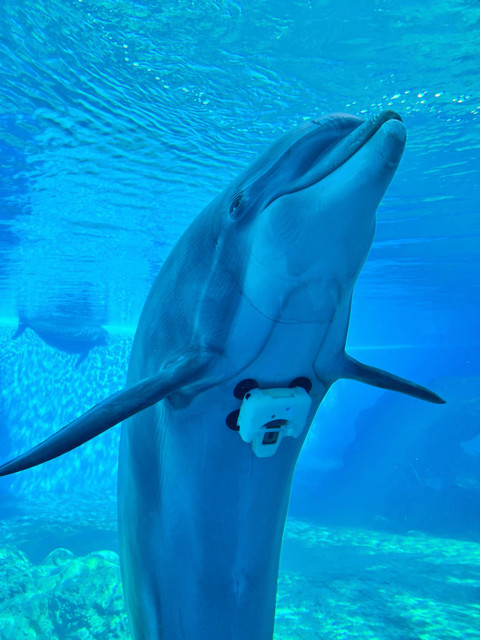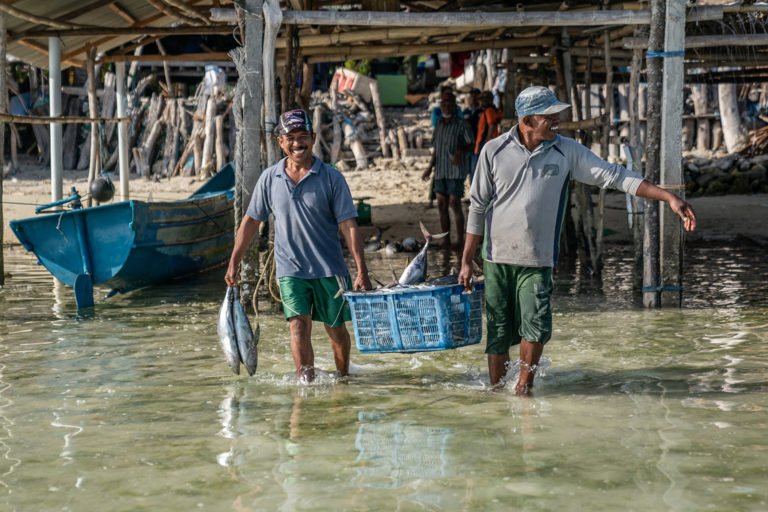- Tagging technology has since the 1960s helped conservationists and researchers keep track of a wide range of wildlife species.
- But tags and collars can often be intrusive or invasive, acting as a source of stress to the animal and sometimes even undermining its survival.
- In recent years, researchers have developed new tag designs aimed at minimizing any impact their work might have on animals, while also providing a richer array of data.
- These solutions range from DIY radio collars made with cat collars, to bespoke tags for dolphins and whales that incorporate Apple Watch-like biometric sensors.
When Alexandra Ross started her study on bridled nail-tail wallabies in central Queensland in Australia in 2017, the wildlife ecologist had a pressing concern. The species was already categorized as endangered by the Australian government, and a previous study had shown that these pint-sized kangaroo cousins (Onychogalea fraenata) panicked when they were fitted with heavy radio collars. Even worse, the collars sometimes got hooked onto a tree or a fence, choking the animal to death.
“Losing even one would be really bad,” Ross tells Mongabay in a video interview. “So we had to figure out a way to let them not get choked.”
With a lean budget making the purchase of expensive collars difficult, Ross went on to make a DIY collar. She attached a radio transmitter to an elastic cat collar with the help of small cables and super glue. The easily available cat collars were light and designed for long-term use. Their elastic nature made them easier for the wallabies to wriggle out of without choking. The results from her study, published in the journal Australian Mammalogy in 2021, showed that 25 out of the 39 collars she attached to wallabies remained in place for more than four months. Two wallabies were found to be agitated, but the study determined that other factors, including pouching of young ones, also played a role in causing that stress.
Ross says her collar could be replicated for any species with a neck. The goal, she says, is to reduce stress and injuries to animals during research or conservation activities. “Everything we do as scientists is intrusive,” she says. “But we are trying to be as minimally intrusive as possible with the end goal of helping them.”
Ross’s relatively cheap and ingenious collar is part of an ever-evolving generation of tagging and tracking devices used to study and protect wildlife. While her design might lie at the rough end of the spectrum, more advanced innovations are also being increasingly developed and deployed at the more refined end. The use of widely available consumer technology in many of them means they can potentially be scaled up and adapted for use across many different species of animals.
Estimating the impact on animals from the tagging techniques used to keep track of them is a tough task because there aren’t extensive studies on the subject. A 2011 study published in the journal Wildlife Research found that there is a “preponderance of studies focused on short-term effects, such as injuries and behavioral changes,” that tagging and marking techniques have on animals — including pain, impact on maternal attendance and duration of foraging trips. While the techniques were not found to affect survival, the study found that “no published research has addressed other possible long-term effects.”
Despite the lack of research, conservation scientists and experts advocate the need to keep adopting newer methodologies and technologies to reduce any impact their work might have on animals. Biologist L. David Mech has been studying wolves (Canis lupus) in North America since 1958 and has seen firsthand how the development of new technology has reshaped the study and conservation of wildlife.

“When the first radio [transmitter] was put on animals in the 1960s, it was totally revolutionary and changed wildlife research tremendously by orders of magnitude,” he tells Mongabay in a video call.
Early on in his career, Mech says, it was impossible to locate a specific wolf. But that changed in November 1968 when he took a flight to track the first wolf he had fitted with a radio collar. “Suddenly, I merely listened to a ‘beep beep beep’ radio signal, and lo and behold, down below was the wolf I had collared,” he says. “It was a virtual miracle in research terms.”
With the advent of more cutting-edge technology in recent years, Mech says there’s a perpetual need to keep updating the methods used in conservation to minimize the trauma they might cause to animals.
“There are still a great deal of things we don’t know about many species, and that will require even newer types of technology,” he says.
Progress is well underway. Much like how technology that was developed for human use — like radio transmission and GPS — has proved useful for research, tracking and conservation in the past, newer consumer technology innovations are also trickling down into the study of wildlife.
Marine conservationist David Haas calls the product he developed “Fitbit for whales.” Haas developed the FaunaTag with engineer and collaborator Sam Kelly as part of his Ph.D. work, which studied how dolphins respond physiologically when they dive into the depths of the ocean. The multisensor device measures movement, acoustics, depth of travel, along with physiological factors such as heart rate, cardiac energetics and blood oxygen level. Tags for dolphins and whales are typically dart-like, embedded in the animal’s fin or its body. But for the FaunaTag, Haas uses a suction cup to ensure that the device is as minimally intrusive as possible. “We wanted to develop non-invasive tag technology that could add to the suite of existing sensor devices, but one that could also give us some idea of what was going on with the animal’s physiology,” he tells Mongabay in a video interview.

Despite possibly being one of the very few non-invasive devices that measure multiple parameters, adapting the technology used in consumer wearables like the Apple Watch and Fitbit wasn’t an easy feat. “It’s really easy to use light to measure physiology in humans, but it’s incredibly challenging to solve that problem in dolphins and whales,” Haas says. “You are already talking about one of the hardest animals to collect physiological data on, because of their incredibly thick skin, thick blubber layers, and blood vessels.”
The parameters measured by the FaunaTag in bottlenose dolphins (Tursiops spp.) were found to be consistent with measurements made in previous studies using more invasive tags. Haas and his partner are now developing a new version of the product meant for terrestrial animals. They also continue to do more clinical validation for the products, as they await the start of manufacturing and market launch, both currently stalled by the ongoing global supply chain crisis.
While he says he’s excited at the prospect of adapting consumer technology for use in the study and conservation of wildlife, Haas also warns about the challenges that come with it. Among the many hurdles, such devices need to be built to withstand harsh wild environments — a far cry from what consumer wearables are normally subjected to. Additionally, absence of WiFi or cellular network coverage in the wild poses communication issues that aren’t usually a concern in human physiological tracking devices, at least not for a prolonged period of time.
“We spent the last four years running up against the challenges of applying human medical sensor technology to animals,” Haas says. “People should and will try it, but the challenges are non-trivial.”
Citations:
Ross, A. K., Lawes, J. C., Lowry, J. A., & Letnic, M. (2021). DIY radio-collar attachment for small macropods. Australian Mammalogy, 44(1), 149-152. doi:10.1071/AM20068
Walker, K. A., Trites, A. W., Haulena, M., & Weary, D. M. (2011). A review of the effects of different marking and tagging techniques on marine mammals. Wildlife Research, 39(1), 15-30. doi:10.1071/WR10177












